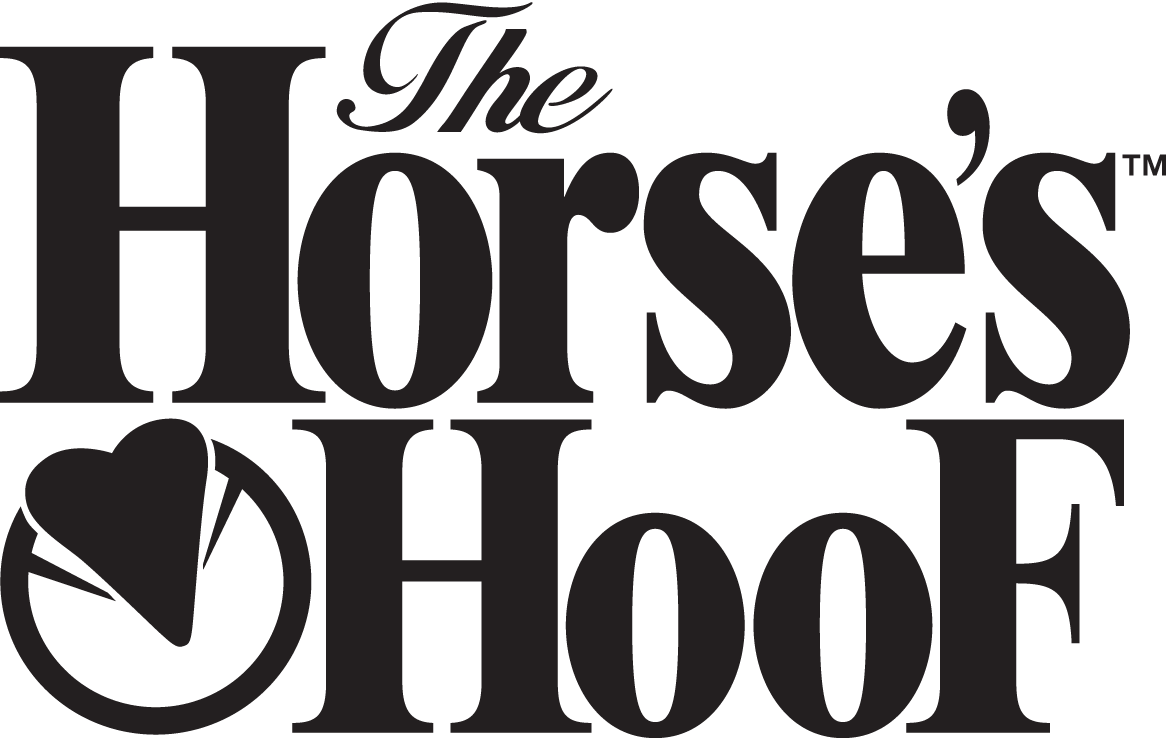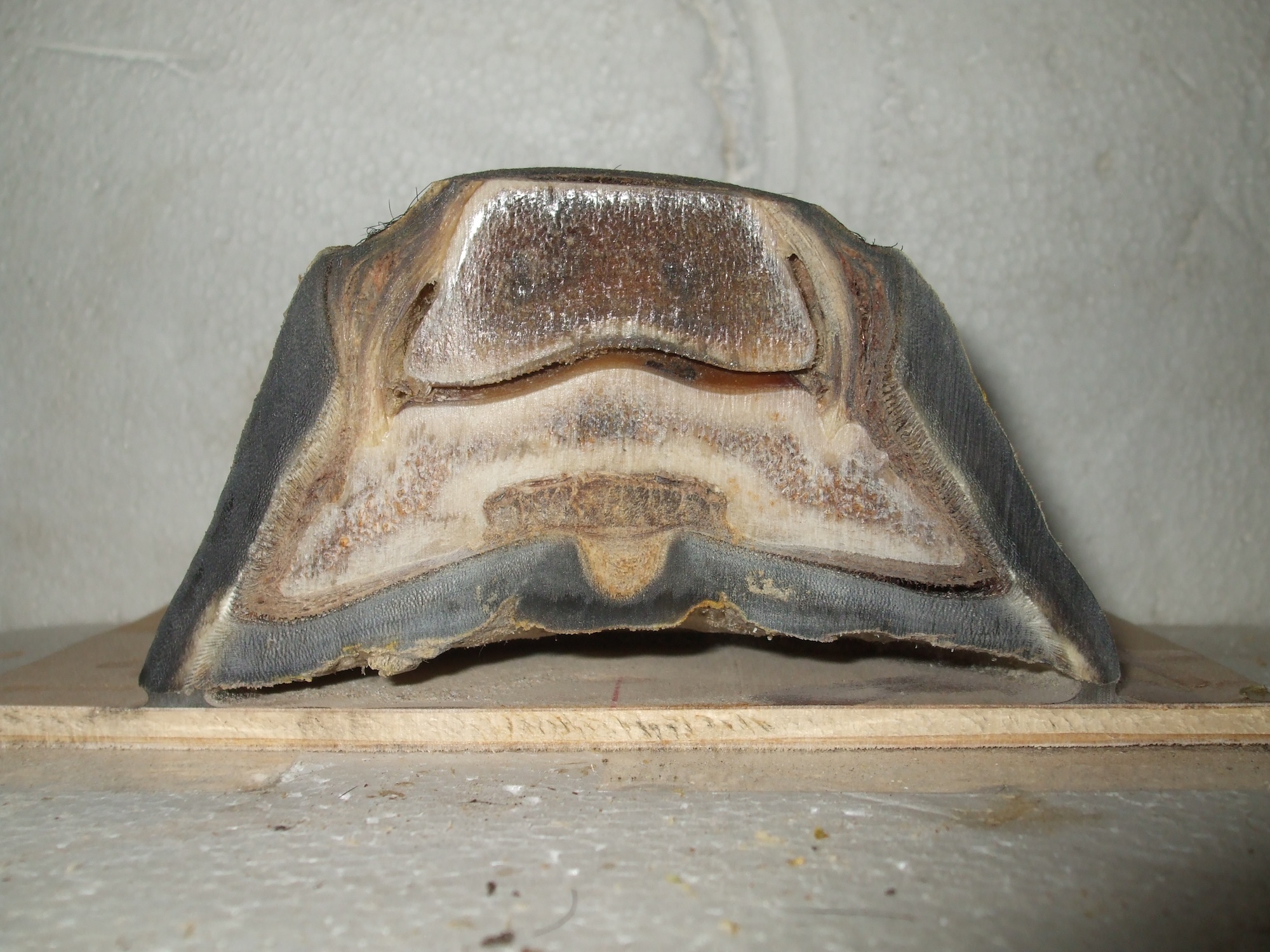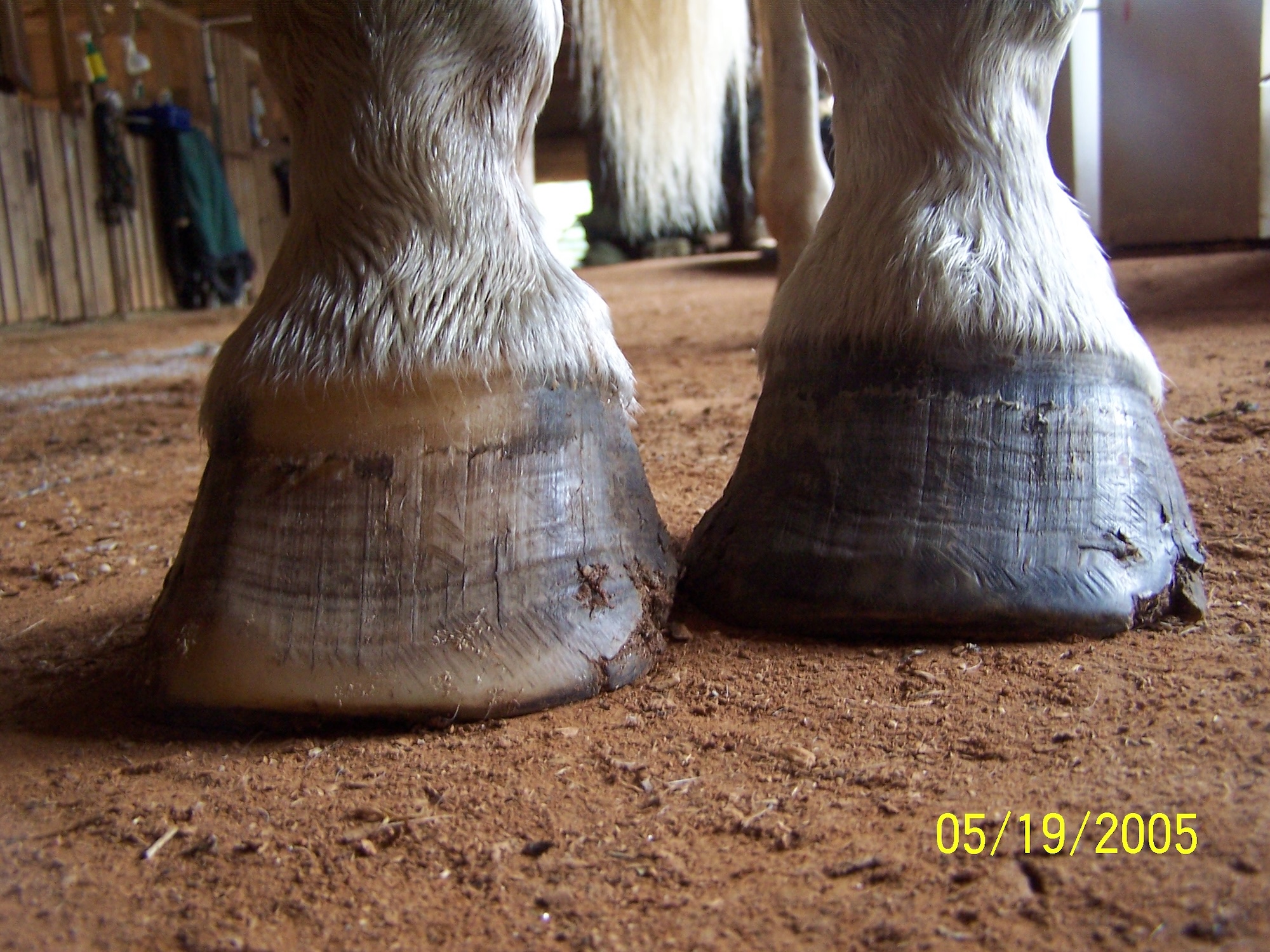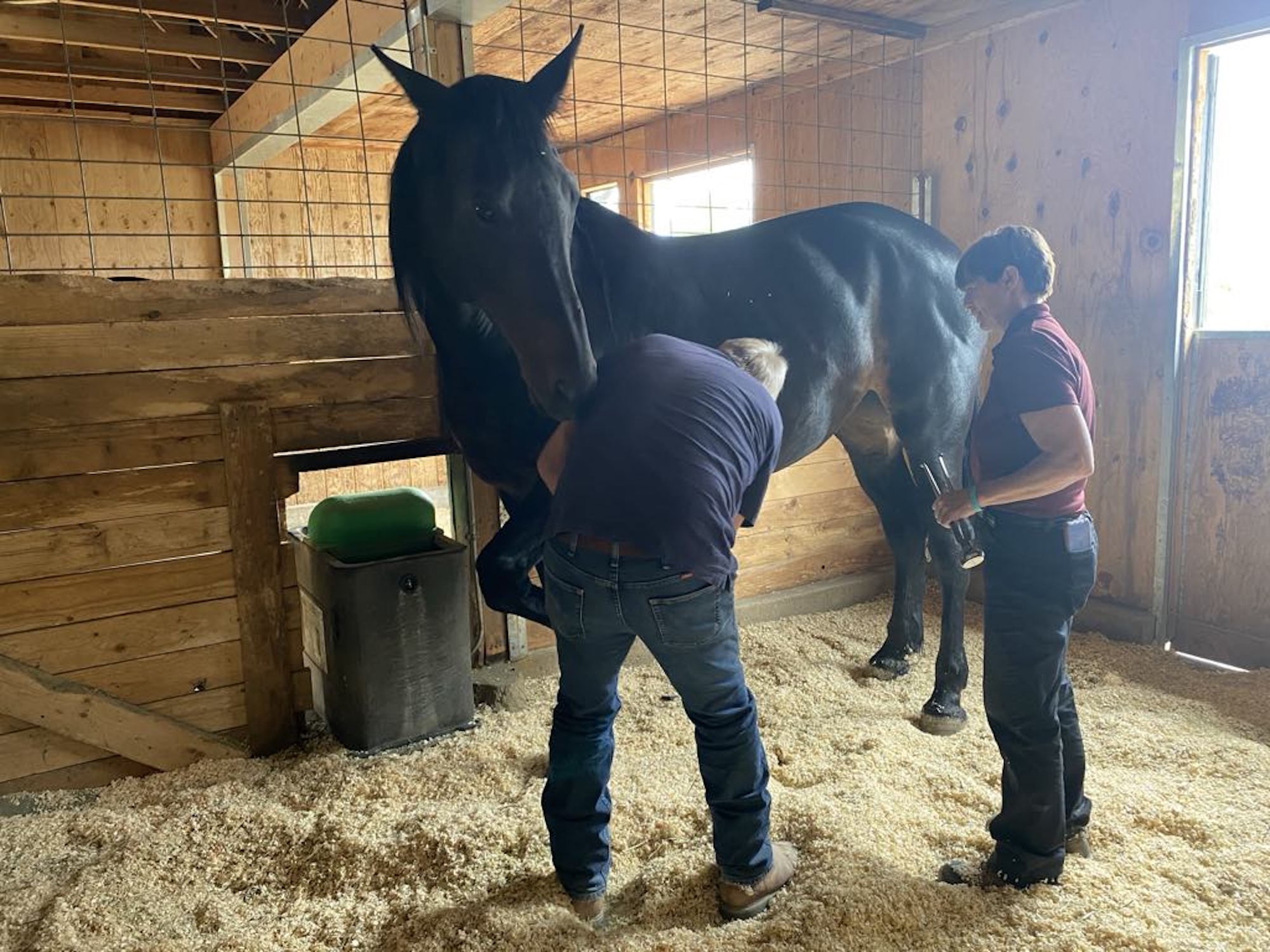I wanted to call this “The Three Causes of Hoof Pathology in Domestic Horses.” However, while all pathology has one of these components (if not all), I have no evidence to indicate that these are the only causes.
#1 Impacted Hoof Wall Horn:
The first of these causes is an impacted or overstressed hoof wall that, especially in shoes, has been peripherally-loaded. The healthier, thick-walled, examples of mustang hooves that I have seen have a significant roll on the hoof wall and a white line that tends to be the lowest point of the hard horn. This, especially on hard terrain, distributes load bearing over a greater portion of the horse’s hoof.

Impacted hoof wall horn is created by peripheral loading. The hoof wall literally becomes displaced upward in the foot. It can then begin to interfere with the collateral ligament and/or the extensor tendon.

Collateral Ligament and Ungual Cartilage Ligament

Extensor Tendon
In domestic horses—especially when a shoe is applied—the hoof wall tends to not be significantly rolled, and, in most cases especially near the end of the shoeing cycle, the hoof wall becomes the only weight-bearing surface of the hoof. This over-stresses the laminae and stretches the lamella, leading to a weakening of laminar support of the coffin bone. As time passes, the hoof wall becomes displaced upward in the foot. The horse’s foot is a complex device with interlocking pieces, so this displacement of the hoof wall, in effect, causes the pieces to start to interfere with each other. The early stages of this simply cause the stride of the horse to shorten. At the back of the stride, the toe wall interferes with the extensor tendon, causing the horse to resist reaching back as far in the stride. When the horse reaches forward in the stride, an excessive, peripherally-loaded heel point can pinch or tear the coronary corium, causing the horse to resist reaching forward as far in the stride.
As peripheral loading progressively displaces the hoof wall, the affects can become more severe. The displacement of hoof wall can start causing tearing of the coronary corium anywhere that the connection is more critical. This is evidenced by the appearance of bruising that either takes the form of a red stripe that runs down the hoof from the coronet to the ground, or on and off bruising. This can occur at the collateral ligaments, the extensor tendon, at the point of the heel, or in conjunction with side- bone. The extreme, long-term results of continued peripheral loading is both founder and, to a lesser degree, navicular syndrome.

Examples of the horn bruising caused by impacted hoof wall horn. Above is a heel bruise created by peripheral loading in the heels. Below is a quarters wall bruise caused by displaced hoof wall horn interfering with the ungual cartilage ligament.

#2 Impacted Bar Horn:
The next cause is impacted bars, and in fact, really is the same as the first cause. There is no significant distinction between hoof wall and bar other than the position in the hoof. The bars are really just an extension of the hoof wall. The bars do have a significant distinction, however, when it comes to natural wear. The bars on healthy wild horses should slough off, and don’t actually receive significant wear, except near the wall-bar turnaround points. While it is important to understand this distinction as the reasoning behind proper trimming, it is not really important here.

Navicular Bone and Deep Digital Flexor Tendon (View from underneath coffin bone)
When the bars become mildly impacted, they will bruise below the flexor tendon, directly under the navicular bone. This leads to heel pain and will shorten the stride, by causing the horse to become resistant to planting his heels. When this becomes chronic and more extreme, the bars are bent inward by the descending flexor tendon, much like a nail that is struck off center by a hammer. The two bars are both bent inward, closing in on and compromising the frog. In some cases, the bent-inward bar corium leads to a collapsed bar that lays over.
The other area of impacted bars to be concerned with, and in fact, the most important concern, is at the most forward point of the bars. At this point, the pressure created by a buildup of bar horn can increase pressure under the deep digital flexor tendon just behind the flexor process. Besides the obvious pain caused by pinching the solar corium between the descending flexor tendon and the bulge caused by the buildup of bar horn (evidenced by bruising in some cases), the increasing pressure under the flexor tendon can be transmitted into the tissues surrounding the insertion point of the digital artery, which is responsible for a great deal of the nourishment of the coffin bone and laminar corium. A restriction here is another contributing factor to laminitis and founder.

Above, impacted bar horn with both bars bent inward, closing in on andcompromising the frog.
Below, the bent-inward bar corium leads to a collapsed bar that lays over.

#3 Impacted Sole Horn:
The final concern is the impaction of sole horn that can occur in the sole-frog junction. A buildup of horn here, especially when combined with a weakened laminar support of the coffin bone (due to one or both of the previous two causes of pathology), can, in its least severe form, cause bruising in the sole just outside the frog due to the pinching of the solar corium between the loosely supported coffin bone and buildup of sole horn. In its more severe form, this can choke off circulation through the branch of the digital artery that surrounds the frog and nourishes both the sole and frog. This restriction is the primary cause of thin soles and, due to arterial damage, will take some time to reverse.
In short, impacted hoof horn of all kinds, especially if it increases pressure under an artery, is the primary mechanical cause of pathology in the domestic horse’s hoof.
by James Welz, published 2013 Hoof Help Online and The Horse’s Hoof Magazine, Issue 56, Fall 2014
See the full content listing of all issues of The Horse’s Hoof Magazine! We also provide instructions on how to read the issues for free on Hoof Help Online.
For a detailed listing of all articles on The Horse’s Hoof website, please visit our Article Directory.




